Animal territoriality: Private property in nature
XVII. We know that since the 20th century birds have a sense of appropriating and protecting the territory, but scientific research in this area is more recent. The list of terrestrial animals is very extensive; in most groups territoriality is a normal behavior and in invertebrates numerous cases are also known, although their general ethology is unknown. So let's see what it is, how and under what conditions territoriality arises.
Territory and area of life
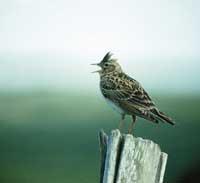
When defining territoriality, not all authors agree. In general, territoriality is the tendency that occurs when an animal or group defends an area continuously or not continuously, preventing the entry of specimens of the same or different species. The area of life, however, is a zone of frequent use by the grain or family group, without this suppose an exclusive property. Territories are hardly overlapped or overlapped, but in living areas this can occur at any time.
Ecological conditions that allow territoriality
Although among the reasons that promote territoriality are mainly mentioned forage sources, any other resource can favor the monopolization of an area, such as the facility to find partners, the reduction of the pressure of predators, the comfort in the growth of the offspring, etc. In many cases, territoriality also regulates population densities.
The defense of resources is conditioned by three main factors: the quality of resources, their distribution at the local and temporary level, and the competence to achieve them. The quality of the resources, the abundance and the local distribution have a direct influence on the territorial behavior, since they depend on the magnitude of the territory that an animal must protect to meet its energy requirements.

If the environment is poor and the pasture is very dispersed, you should not mark and protect the territory. This is the case of the African ñus (Connochaetes gnou), which exploit low-quality forages in broad savannah pastures, crossing long distances, chasing the scarce precipitations.
There are other foods in the same savannah with scarce and very dispersed resources for the ñus. For example, green fruits and buds can be abundant in specific areas and most small antelopes that feed on them are of territorial origin. In this case, the profitability of the territory is not defined by the availability of food, but by the density of competition.
In general, when high quality foods are abundant, they do not defend themselves by separating territories, for example, txontes ( Fringilla coelebs) only protect territories in areas with low seeds.
As mentioned above, resource distribution also limits territorialized behavior. If the emergence of resources is predictable, the animal may have exclusive territories. But if the feeding areas or pastures are perishable or transient, each grain should explode large areas to make the territory profitable. This prevents the protection of the territory and specimens are concentrated in the colonies. This is one of the reasons why many birds have gathered in colonies outside the Txitaliano.
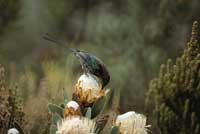
Some species, taking into account the speed of food restoration, can take “companions” in the territories. It is what makes the white potter ( Motacilla alba): this insectivorous bird places its territory on the banks of the rivers, since the main food are the insects of the shore. The white laundry runs through insects, limiting their size to the time needed to restore the densities of suitable insects. When the restoration time is very fast, it will have food surpluses and instead of reducing the size of the territory, it “contracts” another auxiliary grain, maintaining the size of the territory and facilitating the defense work. In times of low insect production, he expels the assistant.
The third main factor is competition in access to resources. The ability or ability to compete can vary from one to another. A profitable expense for one may not be profitable for another. Therefore, the most vulnerable individuals will never be able to protect the territories and many will seek alternative strategies. In many species, especially in birds, specimens that have obtained territory and have no territory can be distinguished. The latter attempt to colonize the territories of the dead individuals to avoid possible reproductive problems. The differentiation that occurs in these cases has genetic effects of interest.
Profitability and proper measurement
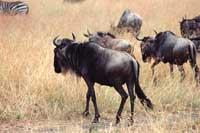
The optimal measure of the territory must be based on costs and benefits. In principle, the benefit of the territory will increase with its size, although, to some extent, the resources are excessively numerous and the costs increase disproportionately. Luxuries can be very expensive, since increasing the surface increases competitiveness, in addition to having to travel long distances to protect the territory.
Although profitability analyses (Figure 1) are valid for all terrestrial animals, they have been mainly applied to nectarjal birds such as colibris and solar birds. Some studies have measured all the energy expenses of these birds throughout the day (location of nectar, flight, maintenance of suspended plants, protection of territory against competition, etc.) and the number of nectars (i.e., benefits) of the flowers of the territory. It has been observed that the territories are not fixed according to a certain measure (can vary from territory to territory up to a hundred times), but according to the number of flowers (since the number of flowers between the richest and poorest territory varies only five times). Consequently, in this case the territorial dimension and nectar density are inversely proportional.
Although the global dimension of the territory is conditioned by the availability of resources, in some cases the delimitation of the territory will be conditioned by the surrounding landscape. For example, in the territory of the fish spiny ( Gasterosteus aculeatus), if we experimentally put some plants, the fish accepts the reduction of the territory, since it wins the “physical separation” with its neighbor. But if there are no neighbors next door or these plants are placed less than 30 cm from the nest, it will not admit physical limits.
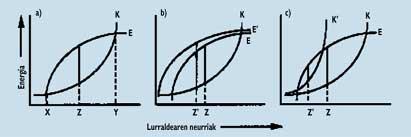
Types of territory
Territories can be classified according to the functions performed by animals. Thus, most birds make pairing, feeding and breeding in the same territory, while others will only exploit it to feed the territory. This is the case of the Cinderella heron ("Ardea cinerea"), which uses trees of lakes or banks to house the nest colonies, limiting the distance between the nests by the oquedades. But in the areas of food, lakes and rice fields, they defend large individual territories. Finally, in the case of a few other birds, male specimens will use the territory to attract and copulate the female through spectacular traits. This is what basoilarra (Tetrao urogallus) does with its attractive dance.
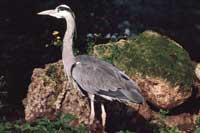
Another possible classification is the sex of the specimens defending the territories. The simplest case is the most isolated animal, with different territories in males and females; for example, hamsters ( Crecetus cricetus) are very territorial and females only allow entry to males an hour before the stratum. In most bird species the male is the one that protects the territory, but in the case of txantxangorri ( Erithacus rubecula), the territories of males and females are separated and after spending the winter in singing, meet in spring, usually in the territory of the male, to grow together the offspring.
In the case of solitary mammals, adult males present the strictest territoriality. Often (for example, the fox, Vulpes vulpes) the territory of a male is overlapped to those of several females and young wanderers are accepted if they respect the hierarchy. For their part, urban foxes that have proliferated in recent years defend the territory in hierarchical groups (like wolves) by concentrating resources in very specific areas (landfills).
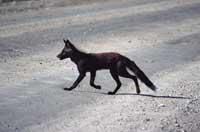
In other cases the only resource that can be found in the territory is the male. Fighters ( Philomachus pugnax) and other species attract the female forming small individual territories known as “los” in traditional dances. Females show a great preference for males located in the center of the sheath, so it is not surprising that dominant males monopolymer these territories. Young people have to settle for peripheral territories, hoping that as they age they will reach a hierarchical level that will allow them access to the copulas.
Finally, interspecific territoriality occurs periodically. When the resources they exploit are equal or similar, they can find territorialized behaviors among specimens of different species. The rattles ( Parus major) and the txontes ( Fringilla coelebs) do not mark interspecific territories throughout Europe, but they have been observed to be avoided on the small island Eigg, located west of Scotland. In the forests of our villages you can find two ideal niches for these two species, which coexist in peace of pake, but the simple and homogeneous structure of the forests of the island forces the carboneros and the txonzas to fill the same niche.
Boundary marking
The mechanisms used to declare ownership can be as diverse as the shape, size, duration and distribution of territories. However, there are three main trends: odour marking, acoustic messages and optical messages.

Odour marking is the most widely used method for delimiting boundaries between mammals, although glands, urine, or feces may be used for other tasks (targeting, identifying group members, or pointing out food zones). The marking method and the marking object vary from species. Thus, badgers ( Meles meles) and bells ( Tuesdays) have the aromatic glands under the bust and can mark anything. Rabbits ( Oryctolagus cuniculus) have two glands, one in the anus and one on the cheek, which can also mark anything, although sometimes the male also marks the female.
Rabbits activate the expulsion of the anal gland, but only when they have to mark the territory and therefore there are excrements of different smell. Many animals simultaneously use several glands to mark the territory. It seems that the two glands have the same function, but when more than one fluid with different chemical composition is removed, the probability of receiving this message is greater.

The second major trend to claim ownership of the territory is that of animals using acoustic messages. Although the best known are bird songs, large marine mammals and red monkeys have also adopted this mechanism. Territorial bird songs are mostly used in closed environments where visibility is limited. Often, a bird can defend the same territory with different sounds or songs, causing the competition to suspect that there is more than one bird in that area.
Finally, we have a group of animals that transmit optical messages, exhibitions and dances. These animals acquire colorful or colorful shapes. If we have said that acoustic messages are used in closed environments, in this case of course, open and open zones are necessary for the message to arrive. In the case of the triduum fish ( Gasterosteus aculeatus) the owner of the territory changes color: when the belly is golden, the alien will attack with passion. They are also exhibited in birds, sometimes combining two acoustic and optical mechanisms. This mixed markup is made, for example, the fin ( Alauda arvensis), which flies constantly while singing. Other birds, however, emit mainly an optical message: although the main objective of the high flights of birds of prey is to increase visibility, they also get them to be observed by them.
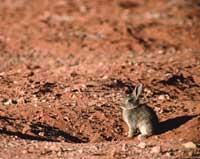
As has been seen, territoriality is fundamental for certain animal species. Regardless of strict ethological views, the important thing is not to understand the origin or physiological basis of territorial behavior, but to identify the ecological conditions that favor it. Only from this eco-ethological point of view can one understand the genesis and evolution of such a complex phenomenon. At a time when the key to the conservation of many species lies in their deep knowledge, it is urgent to promote this type of research.





